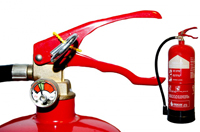 We take our local insurance people for granted. Perhaps we think that everyone in interchangeable, or that it’s just easier to stick with what we know. These are short-cut thoughts that we often discover are all wrong after it’s too late. While there is something to be said about the grass not being greener on the other side, we’ll tell you what to look for when it comes to an insurance agent and workers comp. Whether you’re looking for a new one or evaluating your old one, keep these tips in mind.
We take our local insurance people for granted. Perhaps we think that everyone in interchangeable, or that it’s just easier to stick with what we know. These are short-cut thoughts that we often discover are all wrong after it’s too late. While there is something to be said about the grass not being greener on the other side, we’ll tell you what to look for when it comes to an insurance agent and workers comp. Whether you’re looking for a new one or evaluating your old one, keep these tips in mind.
Begin With Questions
It’s your job to ask this person lots of questions. No matter how kind-hearted an agent may be in their personal life, their professional motives are often a little different. The more coverage they sell you, the more they make. This is not to say that extra coverage won’t be handy or useful later on down the line. After all, settlements and extended medical care can get very expensive. However, when you ask questions, you get a better sense of the person’s character. It doesn’t even necessarily have to be about insurance. Chances are, you know little about insurance and have little time to study up. What you’re looking for in their answers is how extensive they are. Do they tell you the bare minimum or are they pretty open with in their conversations? Can they chat with you for 15 minutes about your children but gloss over important parts of what they’re selling? Often people are blinded by sincere attitudes, but the person will tell you a lot right off the bat both in what they say and what they don’t.
Check Their Reaction Times
Cheaper rates are appealing, but they often come with customer service that’s about as cutthroat. It’s an extremely frustrating experience to not be able to get ahold of someone. If the insurance agent lets emails go by for days, doesn’t call back when they say they’re going to, or is just plain never at their desk, these are causes for concerns. In this day and age as service falls by the wayside to save a buck, we accept these types of inconveniences as just a part of the deal. However, in the midst of an insurance claim, time can be tight. Delays can cause uncertainties for you which can eventually lead to mistakes.
Hopefully, you’ll only need to fulfill your legal obligations when it comes to your workers comp insurance. Having a rigorous hiring policy, enforcing safety tactics and ensuring that you’re watchful on the job is what will be the strongest determining factors as to whether or not you have to call your agent for anything but having to renew your policy.














